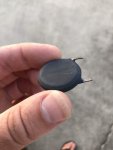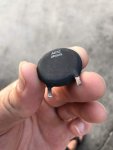I'm trying to troubleshoot our Aquarite SWG. I replaced the thermistor early this spring and it was working great up until recently. Now there seems to be another problem with the LEDs not staying lit (they turn off after a few minutes post-startup) and the unit isn't generating chlorine. I also just noticed that after a startup, the instant salinity reading will settle in after the click, but after about 60 seconds the reading will drop to 0000. Is that normal? Or should it always display the salinity level?
I'm honestly not sure if my problem is the thermistor, the flow switch or the T-cell. I didn't see any visible cracks on the thermistor. I replaced the T-15 cell back in 2012.
I'm honestly not sure if my problem is the thermistor, the flow switch or the T-cell. I didn't see any visible cracks on the thermistor. I replaced the T-15 cell back in 2012.



